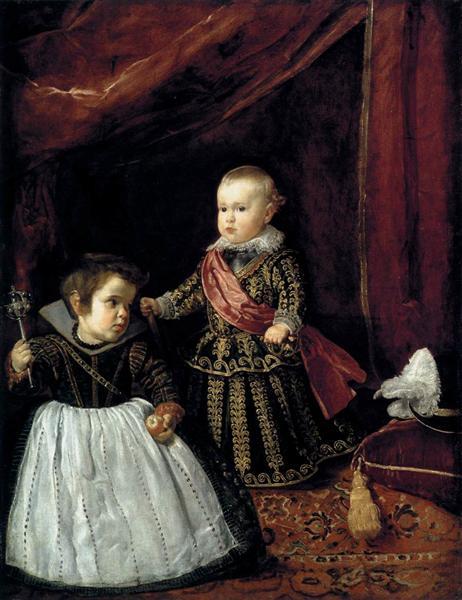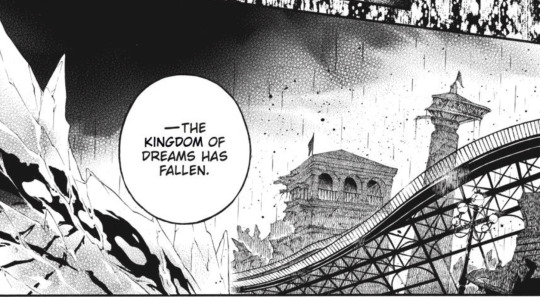#Spanish Golden Age
Text


Alatriste (2006) by Agustín Díaz Yanes | The Surrender of Breda by Diego Velázquez
#alatriste#agustín díaz yanes#viggo mortensen#film#films#cinema#arturo pérez reverte#siege of breda#diego velazquez#diego velázquez#art#spanish golden age#spain#spanish#ambrogio spinola#justin van nassau#dutch#netherlands#flanders#europe#history#pikemen#pike and shot#tercio#tercios#infantry#imperial#eighty years war#thirty years war#habsburg spain
73 notes
·
View notes
Text

St. John the Evangelist on Patmos, Diego Velázquez, 1619-20
#art#art history#Diego Velazquez#religious art#Christian art#Christianity#imaginary portrait#John the Evangelist#St. John the Evangelist#Baroque#Baroque art#Spanish Baroque#Spanish Golden Age#Siglo de Oro#Spanish art#17th century art#National Gallery#National Gallery London
313 notes
·
View notes
Text
Sor Juana Inés de la Cruz
Born in 1648, Sor Juana Inés de la Cruz demonstrated a remarkable aptitude from a young age, displaying an insatiable curiosity for learning. By the age of fifteen, Sor Juana had already distinguished herself as a prodigy, captivating the court with her profound understanding of diverse subjects ranging from physics to philosophy, theology, and mathematics. Her family’s influential status gave her the position of lady-in-waiting at the colonial viceroy’s court.
Despite societal expectations for women of her time to pursue marriage along with numerous proposals, Sor Juana opted for a different path, choosing instead to dedicate herself to a life of religious contemplation and intellectual pursuit. In 1667, she entered the Carmelite convent, seeking a space where she could explore her passion for learning freely. However, it was not until she joined the Jeronymite order in 1669 that Sor Juana found the intellectual freedom she craved. Within the confines of the convent, she was able to host intellectual gatherings and engage in scholarly pursuits without constraint.
Sor Juana's commitment to learning did not go unnoticed, and she soon found herself entangled in ministerial debate and discussions. In 1690, she became involved in a dispute between bishops, defending her right as a woman writer to engage in intellectual discourse through her famous work "The Answer." Despite her eloquent defence, the Church, influenced by patriarchal norms of the time, ultimately forced Sor Juana to relinquish her literary pursuits and renounce her extensive library. Her decision to sell her cherished books and instruments and sign a document in her own blood, writing "Yo, la Peor de Todas" ("I, the worst of all women"), which stands as a poignant symbol of her defiance in the face of censorship and oppression.
Even in the midst of adversity, Sor Juana remained committed to her principles and to serving others. During an epidemic, she cared for the sick and infirm, demonstrating compassion and selflessness until her own health deteriorated. Sor Juana's legacy as "The Nun of Mexico" and "The Tenth Muse" endures through her extensive body of work, which encompasses classical drama, comedy, satirical poetry, and sacred and profane verse. Her writings continue to inspire generations of scholars, artists, and feminists, embodying the enduring power of intellect, courage, and resilience in the pursuit of knowledge and truth.
https://public.websites.umich.edu/~dfrye/SORJUANA.html https://www.philamuseum.org/collection/object/39031
#sor juana inés de la cruz#sor juana#mexico#spanish golden age#women in history#colonialism#history#jeronymite#sor juana ines de la cruz
15 notes
·
View notes
Photo

Juan de Pareja, Diego Velázquez, 1650
Oil on canvas
32 x 27 ½ in. (81.3 x 69.9 cm)
The Metropolitan Museum of Art, New York City, NY, USA
#art#painting#diego velazquez#baroque#spanish golden age#1650s#17th century#oil#portrait#the met#spanish
140 notes
·
View notes
Text
""Marizapalos"| Ibera Auri"
(Anonymous, 17th century)
youtube
Lyrics:
[[MORE]]
Marizápalos era muchacha
Enamoradita de Pedro Martín
Por sobrina del cura estimada,
La gala del pueblo, la flor del abril.
Marizápalos salió una tarde
Al verde sotillo de que va hacia Madrid,
A coger con sus manos las flores
Teniendo más ella que mayo y abril.
Estampando la breve chinela
Que tiene ventaja de mayo chapín
Por bordearle sus plantas de flores
El lazo del campo se volvió tabí.
Merendaron los dos a la mesa
Que puso Marieta de su faldellín
Y Perico, mirando a lo verde,
Comió de la salsa de su perejil.
Pretendiendo de su garabato
Quitarle la carne con garfio sutil,
Marizápalos le dijo: “¡Zape!”
Quedando en su aliento cariño de miz.
Cuando oyeron allá entre las ramas
Las herradurillas de un fuerte rocín,
El adonis se puso en huída
Temiendo los dientes de algún jabalí.
Era el cura, que al soto venía,
Que si un poco antes acierta a venir,
como sabe gramática el cura,
Podía cogerlos en un mal latín.
5 notes
·
View notes
Text

Diego Velázquez (Spanish, 1599-1660) • Don Baltasar Carlos and an Attendant (Original title: Prince Balthasar Charles with his Dwarf) • 1631 • Museum of Fine Arts (MFA)
In accordance with the times, the MFA has edited the name of this work, at least on their website. I was there this summer and the label still contained the original title. - Pagan Sphinx
#paintings I've seen#art#painting#fine art#art history#diego velazquez#portrait#portraits of children#royal portraits#spanish court artist#baroque master#baroque art#spanish golden age#mfa boston#hispanic heritage month
1 note
·
View note
Photo

Love, The Greatest Enchantment by Pedro Calderón de la Barca (tr. by Denis Florence Mac-Carthy, attempted strictly in English asonante and other imitative verse)
#Pedro Calderón de la Barca#spanish golden age#poetry#plays#texts#quotes#images#bluewhimper#blueacacia#calderon
4 notes
·
View notes
Text

El Hada Madrina, from La Esfera Magazine by Manuel Bujados (Oct. 1915)
#manuel bujados#art#illustration#art nouveau#1910s#1910s art#vintage art#vintage illustration#vintage#spanish art#spanish artist#magazine#magazine illustration#la esfera#fairy tale#fairy tales#fairy godmother#golden age of illustration#classic art
2K notes
·
View notes
Text










PERIOD DRAMA APPRECIATION WEEK 2023 | Day 4 (July 6th): Favorite Time Period/Era → Tudor England
#perioddramaedit#perioddramaweek2023#tudoredit#tspedit#mqosedit#twpedit#elizabethedit#becomingelizabethedit#wolfhalledit#wolf hall#the tudors#the spanish princess#the white princess#becoming elizabeth#elizabeth: the golden age#mary queen of scots 2018#*mqos2018#my edits
579 notes
·
View notes
Text
The Count de Saint Germain as Paracelsus (or His Corrupted Foil), and King Basilio

There's a theory floating around that I've mentioned before, and that I did not come up with but can't remember who did, about The Shapeless One being (literally or figuratively) a corrupted Paracelsus. Well, his outfit always reminded me of something, and I just realized it's a magician's outfit complete with a wand (that has stars at the end).
Again, the direct reference is the weird eccentric alchemist, musician, magician, obscurantist and probable conman the Count de Saint Germain, but the possibility of a secondary reference is interesting. At the very least, it might be playing as a foil to the creator of Babel.
The idea of him as a magician is also kind of cool when you take into account the Marquis Machina's speech to Ruthven after the Gevaudan Arc. She/he/they also recalls magic, and possibly shows how alike they are.

I also mentioned this over two years ago when I first watched the anime, but the fact that The Shapeless One wears a broken watch indicates (to me) that he's a creature out of time itself. Could simply be that he's the oldest vampire in history, except maybe for the Faustina or Luna themselves, or that he's something more than just vampire. Like Paracelsus himself.
(or a corrupted analogue to him.)
Is there a third (?!) reference to King Basilio in Life is a Dream?

And finally, almost forgot this, but I've always said that his speech about "dreams are only dreams, inevitably there will come a time when you have to wake up and face reality" from chapter 55 sounds suspiciously like Pedro Calderón de la Barca's well known "Life is a Dream" play with its famous verse:
What is life? 'Tis but a madness.
What is life? A thing that seems,
A mirage that falsely gleams,
Phantom joy, delusive rest,
Since is life a dream at best,
And even dreams themselves are dreams
I don't really want to get into the full possibilities of that reference, particularly with the idea of free will vs predestination that also smoulders in the back of Vanitas no Carte's storyline. I think that deserves it's own essay (and a personal reread of the play).
But lets talk about it superficially. The play's summary goes like this: The protagonist Segismundo's father King Basilio is obsessed with science and astrology. The stars predict his son will be a tyrant, so he locks him in a tower and runs a kind of natural experiment to see if he will turn the tyrant that the stars predict when he's set free. Or if he can exercise free will and become a good king. If he's a tyrant, he locks him back up and convinces him the whole thing was a dream. There's also crossdressing. It's a fun read.
Anyways, it reminds me of The Shapeless One's experiments on Louis. He locked him up in a castle at a mythical region of France, Averoigne, to see if he would become a curse-bearer, as was his (supposedly) destiny due to being born as a twin. Or if he had the free will to break free. Obviously Louis, unlike Segismundo, lost and died. (Or maybe he's locked somewhere else, I know there's some Louis de Sade is Alive Truthers out there!). I could talk about his machinations on Mikhail and Noé as well, but this is long enough.
Astolfo also appears as a character in the play, but Calderón de la Barca lifts him from the same source material Mochijun does in La Chanson de Roland. Not sure if dear Pedro gets it directly from that epic poem or one of its derivative works though, and I'm not curious enough on that to research it.
So I can't draw a direct reference, but it would be strange that someone as well-read on classic European lit like Mochijun wouldn't know of Pedro Calderón de la Barca, probably the most famous Spanish Golden Age writer, and his version of Astolfo.
#i wonder if the whole dreams are only dreams speech is as familiar to english-speakers as spanish-speakers#spanish is a fun language sometimes because a lot of turns of phrases are linked to old Spanish Golden Age works#some of it from Lope de Vega or Calderón de la Barca. Thats what my scholarly friend says anyways#the case study of vanitas#vanitas no carte#the shapeless one#the count de saint germain#vnc#vnc meta#vnc references
21 notes
·
View notes
Text


Period dramas dresses tournament: Green dresses Round 1- Group C: Elizabeth I, Elizabeth: the golden age (gifset) vs Catherine of Aragon, The spanish princess (gifset)
#period drama dresses tournament#tournament poll#tumblr tournament#polls#fashion poll#elizabeth tudor#elizabeth i#elizabeth: the golden age#catherine of aragon#the spanish princess#green r1#elizabeth the golden age
11 notes
·
View notes
Text

The Battle of Rocroi "Rocroi, the Last Tercio" by Augusto Ferrer-Dalmau
#augusto ferrer dalmau#battle of rocroi#art#thirty years war#rocroi#tercios#tercio#spain#spanish empire#spanish#pikemen#infantry#pike and shot#europe#history#spanish golden age#habsburg spain#france#habsburg monarchy#house of habsburg#habsburg#european#battle#last stand#franco spanish war
66 notes
·
View notes
Text

King Philip II of Spain Banqueting with his Family and Courtiers (The Royal Feast), Alonso Sánchez Coello, 1579
#art#art history#Alonso Sanchez Coello#portrait#portrait painting#group portrait#House of Habsburg#Spanish Renaissance#Spanish Golden Age#Siglo de Oro#Spanish art#16th century art#National Museum in Warsaw#oil on canvas
63 notes
·
View notes
Text






tudor week 23: most used tudor media resources - tv & film edition
the white princess- henry vii & elizabeth of york's reign
the spanish princess - henry viii's early reign
the other boleyn girl (2008) - costumes & anne b-centric content
the tudors - henry viii's reign after c.1525
becoming elizabeth (2022) - edward vi's reign through elizabeth's pov
elizabeth 1998 & elizabeth: the golden age - elizabeth i's early reign + the beginning of england's golden age
#the white princess#the spanish princess#the other boleyn girl#the tudors#becoming elizabeth#elizabeth 1998#elizabeth: the golden age#jodie comer#charlotte hope#natalie portman#sarah bolger#alicia von rittberg#cate blanchett#elizabeth of york#henry vii#catherine of aragon#anne boleyn#mary tudor#edward vi#elizabeth i#mary i#perioddramaedit#weloveperioddrama#tudor week 2023#dailytudors#myedit*#mine*
41 notes
·
View notes
Text






De Frente, Marchen (1930) Spanish Language Version of Doughboys
Publicity Photos with Leading Lady Conchita Montenegro
#buster keaton#conchita montenegro#De Frente Marchen#doughboys#1930s#talkies#precode#pre code movies#hollywood#golden age of hollywood#silent movies#spanish language#edward sedgwick
41 notes
·
View notes
Video
youtube
Chacona - Arañés - Musica Ficta - Ensemble Fontegara
#youtube#chacona#musica ficta#ensemble fontegara#aranes#music#17th century music#juan aranes#spanish golden age#reblogging old faves
0 notes